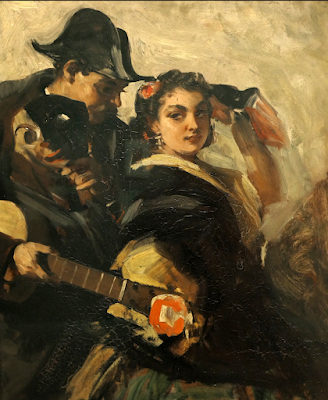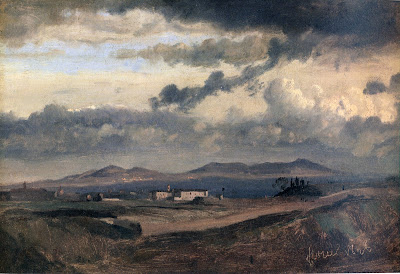
I admit it, I love page-turners: novels that you can’t put
down. I remember being totally hooked on Bond books, Gone with the Wind,
Dickens, even Agatha Christie, trying to find what happened next. I loved The
Count of Monte Cristo, by Alexandre Dumas, when I read it some years ago. I
followed that with The Three Musketeers, and it must have kept me
interested, even if not as good as The Count, because I finished it.
So why abandon Twenty Years After, the sequel to The
Three Musketeers, when I’ve only read four chapters? Have my standards got
higher? I think that’s unlikely. Because of a lack of historical accuracy? To
be honest, I’m not bothered if it gives me a good story, even though the
edition I am reading, by David Coward (World’s Classics, 2008), makes it clear
Dumas has a very cavalier attitude to facts and events. No, the cause for my
dislike was very specific: because the chapter I read, chapter VI, “D’Artagnan
at Forty Years of Age”, which was the first to provide some detailed depiction
of the main character, left me feeling unhappy with the author’s attitudes.
What happened in this chapter to set me against the novel?
A bit of background. D’Artagnan, one of the musketeers, is
the hero of this novel. For the novelist to win us over, he has to begin the
novel by getting us to like the main character. This chapter is the moment when
he gains our sympathy for the hero. D’Artagnan has been lodging at a hotel in
the Rue Tiquetonne, where he has been having an affair with the mistress of the
house. Her “inconvenient husband” had run away after “d’Artagnan had made a
pretence of running his sword through his body” (not surprising, perhaps, he
ran away). Even though the husband has departed, d’Artagnan refuses to marry
the (unnamed) woman, for fear of bigamy.
As the action begins, D’Artagnan returns from a (wholly
fictitious) military expedition of several months in the Franche Comte, only to
discover that the mistress now has a new partner, a Swiss. She claims she is
going to marry her Swiss partner; D’Artagnan states “you cannot marry Madame
without my consent, and … I do not give it”. What follows is a fight between
the Swiss and D’Artagnan, and even though the Swiss is a foot higher than our
hero. “I am a lieutenant in the Musketeers of his Majesty, and consequently
your superior in everything”. D’Artagnan wounds the Swiss twice.
At that point, D’Artagnan, having regained the mistress,
returns to the lodging, and immediately rejects her:
‘Now, fair Madeleine,’ said he,
‘you know the distance between a Swiss and a gentleman! As to you, you have
conducted yourself like a low tavern-keeper. So much the worse for you—for by
this conduct you lose my esteem and my patronage. I drove out the Swiss to
humiliate you; but I shall lodge here no longer. I do not take quarters where I
despise people.”
Dumas Alexandre; (père). Twenty Years After (Oxford World's
Classics) (p. 62).
What are we to make of this? The Swiss has done nothing,
except get in D’Artagnan’s way; yet he is ejected by force, the second of two males
to suffer this fate. This blatant misogyny is presented in Dumas’ cheerful
style as the conduct of a swashbuckling
hero, resembling in many ways a kind of male behaviour celebrated in the Hollywood
Western. The principles are:
I admit it, I love page-turners: novels that you can’t put
down. I remember being totally hooked on Bond books, Gone with the Wind,
Dickens, even Agatha Christie, trying to find what happened next. I loved The
Count of Monte Cristo, by Alexandre Dumas, when I read it some years ago. I
followed that with The Three Musketeers, and it must have kept me
interested, even if not as good as The Count, because I finished it.
So why should I abandon Twenty Years After, the sequel to The
Three Musketeers, when I’ve only read four chapters? Have my standards got
higher? I think that’s unlikely. Because of a lack of historical accuracy? To
be honest, I’m not bothered if it gives me a good story, even though the
edition I am reading, by David Coward (World’s Classics, 2008), makes it clear
Dumas has a very cavalier attitude to facts and events. No, the cause for my
dislike was very specific: because the chapter I read, chapter VI, “D’Artagnan
at Forty Years of Age”, which was the first to provide some detailed depiction
of the main character, left me feeling unhappy with the author’s attitudes.
What happened in this chapter to set me against the novel?
A bit of background. D’Artagnan, one of the musketeers, is
the hero of this novel. For the novelist to win us over, he has to begin the
novel by getting us to like the main character. This chapter is the moment when
he gains our sympathy for the hero. D’Artagnan has been lodging at a hotel in
the Rue Tiquetonne, where he has been having an affair with the mistress of the
house. Her “inconvenient husband” had run away after “d’Artagnan had made a
pretence of running his sword through his body” (not surprising, perhaps, he
ran away). Even though the husband has departed, d’Artagnan refuses to marry
the (unnamed) woman, for fear of bigamy.
As the action begins, D’Artagnan returns from a (wholly
fictitious) military expedition of several months in the Franche Comte, only to
discover that the mistress now has a new partner, a Swiss. She claims she is
going to marry her Swiss partner; D’Artagnan states “you cannot marry Madame
without my consent, and … I do not give it”. What follows is a fight between
the Swiss and D’Artagnan, and even though the Swiss is a foot higher than our
hero. “I am a lieutenant in the Musketeers of his Majesty, and consequently
your superior in everything”. D’Artagnan wounds the Swiss twice.
At that point, D’Artagnan, having regained the mistress,
returns to the lodging, and immediately rejects her:
‘Now, fair Madeleine,’ said he,
‘you know the distance between a Swiss and a gentleman! As to you, you have
conducted yourself like a low tavern-keeper. So much the worse for you—for by
this conduct you lose my esteem and my patronage. I drove out the Swiss to
humiliate you; but I shall lodge here no longer. I do not take quarters where I
despise people.” (page 62)
What are we to make of this? The Swiss has done nothing,
except get in D’Artagnan’s way; yet he is ejected by force, the second of two males
to suffer this fate. This blatant misogyny is presented in Dumas’ cheerful
style as the conduct of a swashbuckling
hero, resembling in many ways a kind of male behaviour celebrated in the Hollywood
Western. The principles are:
- Get your way by your fighting. If you can beat a
rival in a fight, then you deserve the woman
- Once you have chosen a female sexual partner, she is your property,
even when you are absent. She no longer has a right to independent action.
At this critical moment of the novel, instead of making me
feel warm towards the principal character, I felt repulsed by D’Artagnan’s misogyny.
The rest of the novel will no doubt display similar attitudes. Might is right, if
you are skilled with a sword.
Who translated this edition of Twenty Years After? I
noticed on the title page that the book is stated as “Edited with an Introduction
and Notes by David Coward” – with no
mention of a translator. Did David Coward really translate Dumas afresh?
It doesn’t look like it. Coward states in the Introduction to the World’s
Classics edition:
A version of the authorized
French text, by William Robson, was issued in London by Routledge in 1856. Robson’s
classic version served as the basis of most subsequent ‘new’ translations and
survives substantially in the present edition.
In what way does it “survive substantially in the present
edition”? In the errors in the French? Do the inverted commas around "new" make it clear this is nothing of the kind?
There are several schoolboy errors in the
translation, for example:
And he assumed an air of
astonishment that Mondori or Bellerose,* the two best comedians of that day,
would have envied him.
This is a translation from the French “les deux meilleurs
comédiens de l'époque”. But “comédien”
does not mean “comedian”; it means actor. Here is Robson’s 1856 version of the
same sentence:
And he armed his features with a
stupidity which Mondori and Bellerin might have envied him, and they were the
two best comedians of the period.
Quite apart from outright errors, much of the phrasing in
this edition reads to me like 19th-century English. From page one:
the light from a candelabra
filled with candles illumined it in front.
In Robson’s translation, this appears as:
Whilst the front of his figure
was illumined by the wax-lights of a candelabre [sic].
My guess is that Oxford have been using the Robson
translation, updated and amended piecemeal, in all editions of the book since
it was first issued. The imprint page of the Kindle edition I was reading shows simply “Editorial material <C>
David Coward 1993” – no claim to copyright is made for the translation. I haven’t
been able to find the date of first publication of this edition of Twenty Years After, but my
guess is that it was first published quite early in the series, and has
remained in print (and never retranslated) ever since. The World’s Classics
series was founded in 1901, and the series was bought by Oxford in 1905, and
Oxford claim
“A continuous program of new titles and revised editions ensures that the
series retains its breadth and reflects the latest scholarship.” Not in the
case of this translation, clearly.
The unacceptable attitudes, and the poor translation, combined, as
I read chapter six, and left a bad taste in my mouth. Rather than passively
accepting an outdated translation by an author with objectionable views, I
stopped at that point. I’m no longer reading Dumas, and in future I’m going to
look very carefully at foreign literature in World’s Classics.


























